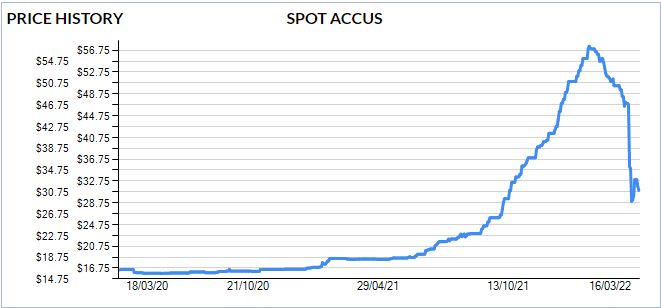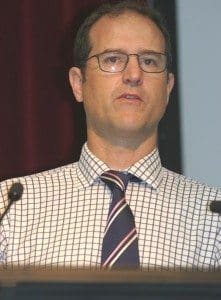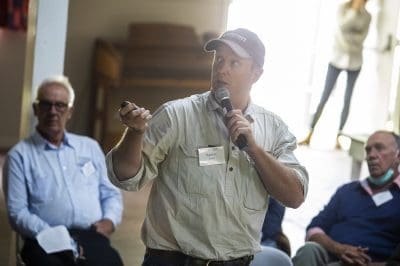
Click to enlarge. The price of Australian Carbon Credit Units has dropped significantly after a change in government regulation. Source: Jarden
AUSTRALIA’S carbon market is starting to stabilise after a major government intervention triggered credits to halve in value in a matter of days.
Earlier this month, Federal energy minister Angus Taylor announced changes to the Emissions Reduction Fund (ERF) – allowing sellers who were locked into government contracts to make an exit payment and sell credits on the spot market. The exits will be staged in six month intervals.
The aim was to free up more Australian Carbon Credit Units (ACCUs) and allow projects to earn more money selling in a competitive market. ACCUs are based off sequestering a tonne of carbon dioxide, using a series of methods under the ERF.
Most of the forward-sold government contracts were worth $12 to $16 per ACCU – about half the $31 it is today.
Prior to the latest move from the government, demand has been outstripping supply on the carbon market, with prices tripling in the second half of 2021. Increased demand from businesses complying with the ERF’s safeguard mechanism, which requires companies to keep emissions below a baseline level, was mostly credited. (Click here for Beef Central’s previous story)
The move to free up more ACCUs was met with scepticism by the industry, with many worried the repeated government intervention was going to send bad signals to buyers.
In its weekly update, carbon market analysis service Reputex Energy said while the market was starting to stabilise, there was some evidence of apprehensive buyers.
“While potential remains for buyers to return to the market, many participants remain watchful as they wait to see how a forecast large volume of new supply from existing fixed delivery contracts will be made available to the market,” the report said.
The “least bad” option
Despite the short-term fluctuations, Carbon Link CEO Andrew Gatenby said the long-term prospect of the carbon market was positive. The company has dozens of projects along the east coast.

Andrew Gatenby
“We don’t like intervention like this, but it is the least-bad way of doing it because we also don’t want to have unfairness in the market,” Mr Gatenby said.
“Most of the projects that are being started at the moment will only start generating ACCUs in five-years-time and we expect the market to be a lot better then. We remain confident that price will recover.
“I know one of the big energy companies in WA is assuming ACCUs to cost $80 in its sustainability report.”
Mr Gatenby said with the price currently hovering around the $30 mark, many projects were still viable if it does not change.
“The biggest driver of project viability is the sequestration rate, which is the tonnes of carbon you can sequester per hectare, per year. If you can increase your sequestration rate from one-to-tonnes it makes a big difference to the bottom line,” he said.
“Typically, we have found with our clients that if the project is 1,000 hectares or more, $30 can generate a good return.”
Consistency and integrity needed in carbon farming
Hamish Webb from Armidale-based Precision Pastures echoed Mr Gateby’s sentiment, saying a consistent market was needed to give confidence to buyers and sellers.
The company is an agronomy service that provides baseline report to producers looking to start soil carbon projects. Mr Webb said demand for the service was growing and the company had been ordering more equipment and putting on more staff to keep up.

Hamish Webb
“I think the whole industry needs to keep a high standard of its work in the carbon space,” he said.
“We have about 150 clients and there are 50,000 red meat producers. Every one of them needs to have the same conversations we have, looking at the risks and rewards of doing a soil carbon project.
Mr Webb said a stable carbon market was needed to underpin the confidence of producers looking to start projects.
“With a new market, like the carbon market, I would rather it find an equilibrium that suits everyone involved – whether it is $30 or $50,” he said.
“We want a market where we can increase supply with confidence and buyers can find a significant supply to offset emissions. A market that flies around from $16 to $60 is not helpful to anyone.”
